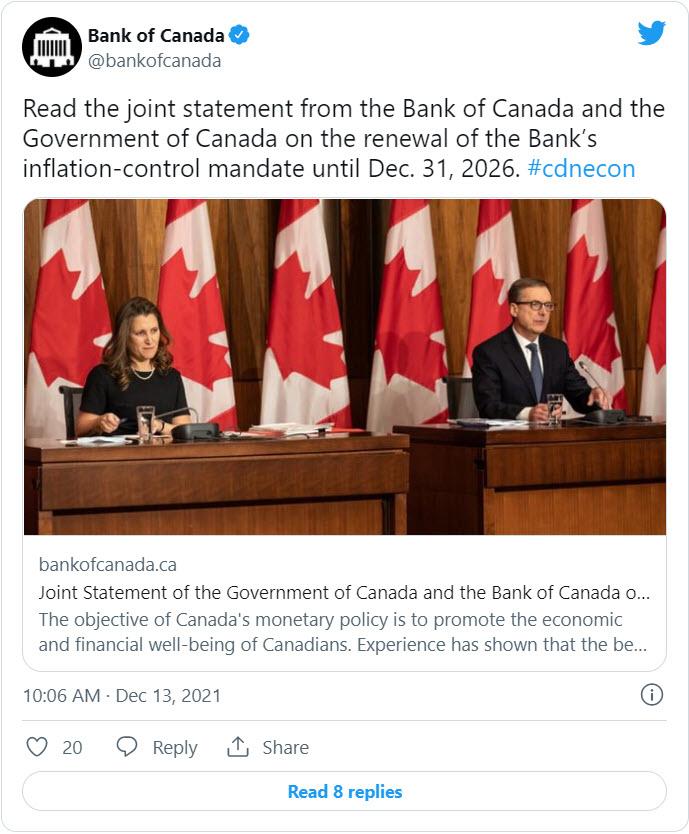
Renewing the Bank’s monetary policy framework
Every five years, the Bank and the Government of Canada review and renew their agreement on Canada’s monetary policy framework. In 2021, Canada’s flexible inflation-targeting framework was renewed for 2022 to 2026.
The framework’s foundation remains a 2% inflation target within a control range of 1% to 3%. The agreement reaffirms price stability as the Bank’s primary objective and lays out how the Bank will continue to use the flexibility built into its framework to address challenges confronting our economy.
This includes using the Bank’s extended monetary policy tools when needed and actively seeking the level of maximum sustainable employment that is consistent with price stability, when conditions warrant. The agreement recognizes that the Bank is considering a broader range of labour market indicators to assess full employment and the economy’s potential output.
Consulting with Canadians
As part of the renewal process, the Bank held open consultations with the Canadian public and discussions with a broad set of stakeholders, experts and interest groups. This comprehensive exercise ensured that diverse views were considered.
The Bank sought input on the monetary policy framework and learned how inflation affects different socio-economic groups. More than 8,500 Canadians from across the country participated in an online survey, while many others participated in focus groups, round-table discussions and other consultations.
The Bank concluded its public outreach activities in 2021 and published a report summarizing what it learned. The report was an important input to the renewal.
Researching alternative monetary policy frameworks
Leading up to the renewal, staff conducted critical research. Using a combination of model simulations, lab experiments and public consultations, staff ran a “horse race” to weigh the pros and cons of the main alternatives to flexible inflation targeting:
- average inflation targeting
- dual mandate
- nominal gross domestic product (NGDP)–level targeting
- NGDP-growth targeting
- price-level targeting
This was the first such comparison since the Bank adopted inflation targeting in 1991.
Staff assessed the robustness of each option at the effective lower bound using a suite of models that reflect a range of assumptions about household diversity and private sector expectations.1
The current flexible inflation-targeting framework, average inflation targeting and a dual mandate did better than other approaches that represent larger departures from the status quo. While neither average inflation targeting nor a dual mandate was judged to be an overall improvement over the current approach, the Bank found value in some elements of each of these alternatives.
Further to this research, however, the Bank concluded that the inflation-targeting framework is flexible enough to incorporate these key elements while avoiding the drawbacks associated with the alternative approaches.
Read the joint statement from the Bank of Canada and the Government of Canada on the renewal of the Bank’s inflation-control mandate until Dec. 31, 2026. #cdnecon https://t.co/64D0Tzo1fz
— Bank of Canada (@bankofcanada) December 13, 2021

https://twitter.com/bankofcanada/status/1470409769739563009
More information
- 1. Staff used a model with a variety of households to assess the distributional effects of alternative frameworks. Robustness analyses with models using alternative expectations are important because private sector expectations play a crucial role in the economic performance of monetary policy frameworks.[←]